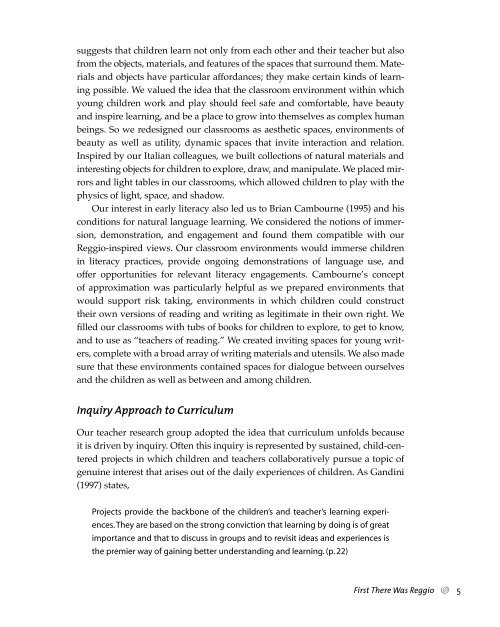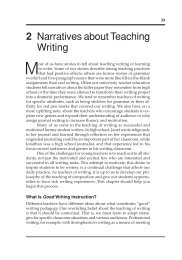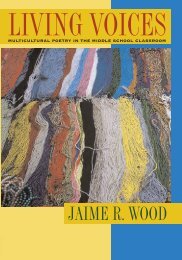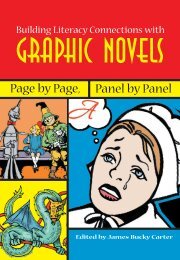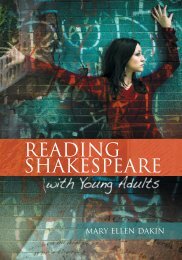View a Sample Chapter - National Council of Teachers of English
View a Sample Chapter - National Council of Teachers of English
View a Sample Chapter - National Council of Teachers of English
- No tags were found...
You also want an ePaper? Increase the reach of your titles
YUMPU automatically turns print PDFs into web optimized ePapers that Google loves.
suggests that children learn not only from each other and their teacher but als<strong>of</strong>rom the objects, materials, and features <strong>of</strong> the spaces that surround them. Materialsand objects have particular affordances; they make certain kinds <strong>of</strong> learningpossible. We valued the idea that the classroom environment within whichyoung children work and play should feel safe and comfortable, have beautyand inspire learning, and be a place to grow into themselves as complex humanbeings. So we redesigned our classrooms as aesthetic spaces, environments <strong>of</strong>beauty as well as utility, dynamic spaces that invite interaction and relation.Inspired by our Italian colleagues, we built collections <strong>of</strong> natural materials andinteresting objects for children to explore, draw, and manipulate. We placed mirrorsand light tables in our classrooms, which allowed children to play with thephysics <strong>of</strong> light, space, and shadow.Our interest in early literacy also led us to Brian Cambourne (1995) and hisconditions for natural language learning. We considered the notions <strong>of</strong> immersion,demonstration, and engagement and found them compatible with ourReggio-inspired views. Our classroom environments would immerse childrenin literacy practices, provide ongoing demonstrations <strong>of</strong> language use, and<strong>of</strong>fer opportunities for relevant literacy engagements. Cambourne’s concept<strong>of</strong> approximation was particularly helpful as we prepared environments thatwould support risk taking, environments in which children could constructtheir own versions <strong>of</strong> reading and writing as legitimate in their own right. Wefilled our classrooms with tubs <strong>of</strong> books for children to explore, to get to know,and to use as “teachers <strong>of</strong> reading.” We created inviting spaces for young writers,complete with a broad array <strong>of</strong> writing materials and utensils. We also madesure that these environments contained spaces for dialogue between ourselvesand the children as well as between and among children.Inquiry Approach to CurriculumOur teacher research group adopted the idea that curriculum unfolds becauseit is driven by inquiry. Often this inquiry is represented by sustained, child-centeredprojects in which children and teachers collaboratively pursue a topic <strong>of</strong>genuine interest that arises out <strong>of</strong> the daily experiences <strong>of</strong> children. As Gandini(1997) states,Projects provide the backbone <strong>of</strong> the children’s and teacher’s learning experiences.They are based on the strong conviction that learning by doing is <strong>of</strong> greatimportance and that to discuss in groups and to revisit ideas and experiences isthe premier way <strong>of</strong> gaining better understanding and learning. (p. 22)First There Was Reggio D 5


